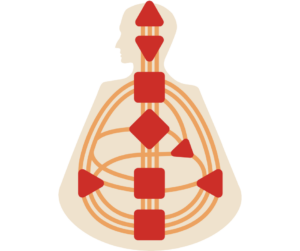 Coping with Withdrawal Symptoms: Tips and Techniques to Ease the Quitting Process
Coping with Withdrawal Symptoms: Tips and Techniques to Ease the Quitting Process
Introduction:
Withdrawal symptoms are a common challenge faced by individuals attempting to quit smoking. These symptoms can be both physical and psychological, often making the quitting process difficult. This article will discuss the various withdrawal symptoms that may arise, and provide tips and techniques to effectively cope with them, ultimately easing the quitting process.
Understanding Withdrawal Symptoms:
When you stop smoking, your body begins to adjust to the absence of nicotine. This adjustment period can lead to various withdrawal symptoms, such as irritability, anxiety, difficulty concentrating, increased appetite, and cravings for cigarettes. These symptoms typically peak within the first few days or weeks of quitting and gradually subside over time.
Tips and Techniques to Cope with Withdrawal Symptoms:
a. Nicotine Replacement Therapy (NRT):
NRT products, such as nicotine gum, patches, lozenges, or inhalers, can help alleviate withdrawal symptoms by providing a controlled dose of nicotine without the harmful chemicals found in cigarettes. Consult your healthcare professional to determine the appropriate NRT product for your needs.
b. Prescription Medications:
Certain medications, like varenicline (Chantix) and bupropion (Zyban), can help reduce withdrawal symptoms and cravings. Speak with your healthcare provider to discuss whether these medications are suitable for you.
c. Exercise:
Physical activity can help alleviate withdrawal symptoms such as anxiety, irritability, and difficulty concentrating. Aim for at least 30 minutes of moderate-intensity exercise daily, like brisk walking, swimming, or cycling.
d. Deep Breathing and Relaxation Techniques:
Deep breathing exercises, progressive muscle relaxation, and mindfulness meditation can help reduce stress, anxiety, and cravings associated with withdrawal symptoms. Practice these techniques regularly, especially during moments of high stress or cravings.
e. Manage Triggers:
Identify situations or feelings that trigger cravings and develop strategies to avoid or cope with them. For example, if you typically smoke after a meal, consider going for a walk or engaging in a different activity instead.
f. Stay Hydrated:
Drinking water can help flush nicotine from your system and reduce cravings. Aim to drink at least 8 cups of water daily.
g. Healthy Snacks:
Keep healthy snacks on hand, such as fresh fruits, vegetables, or nuts, to manage increased appetite and prevent weight gain. Chewing sugar-free gum or sucking on sugar-free candy can also help curb oral cravings.
h. Distractions:
Find activities that can help distract you from cravings, such as reading, listening to music, or calling a supportive friend.
i. Social Support:
Surround yourself with friends, family members, or support groups who understand the challenges of quitting smoking and can offer encouragement and advice during difficult moments.
Conclusion:
Coping with withdrawal symptoms is a crucial aspect of the quitting process. By utilizing a combination of techniques, such as nicotine replacement therapy, prescription medications, exercise, deep breathing exercises, managing triggers, staying hydrated, healthy snacking, distractions, and social support, you can effectively ease withdrawal symptoms and increase your chances of achieving a smoke-free life.
